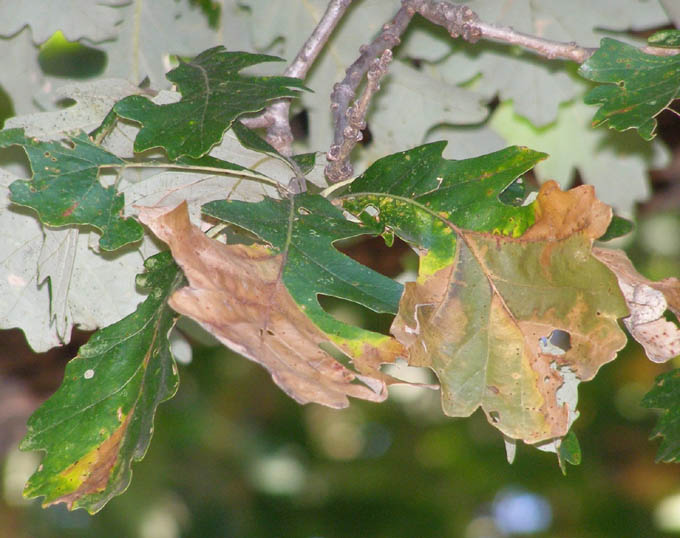Last summer, rainy conditions brought about many cases of a fungal infection known as Bur Oak Blight. The fungus survives the winter on infected leaves that remain attached within the tree canopy. During wet springs, the fungi release spores that infect newly forming leaves. By mid- to late-summer, leaf veins turn brown. The discoloration eventually expands to cover a large portion of the leaves. In fall, many infected leaves or leaf stems remain attached to the tree. Healthy Bur Oaks do not retain their leaves over winter like some other Oak species do.
Bur Oak Blight occurs on Bur Oaks (Quercus macrocarpa, also known as Burr Oaks) exclusively. Bur Oaks can be identified by their large acorns with a cap that wraps more than halfway around the nut. The caps also have fringes, or burs, around the ends. Their leaves have rounded lobes with deep indentations at the center. If you are not sure if an Oak on your property is a Bur Oak, we would be happy to assist you with identification.
Over several years, Bur Oak Blight can severely weaken a tree and lead to death. It can also open the door for secondary problems such as Two-lined Chestnut Borer and Armillaria root rot. Fungicide injections have proven to be effective at controlling this disease. Fertilization programs and bio-stimulant injections can also give the tree an extra boost to stave off infection. If you have concerns about your Oak trees, please do not hesitate to give us a call.
Image sources:
https://en.wikipedia.org/wiki/Quercus_macrocarpa
http://blog-yard-garden-news.extension.umn.edu/2016/08/a-bad-year-for-burr-oak-blight.html

